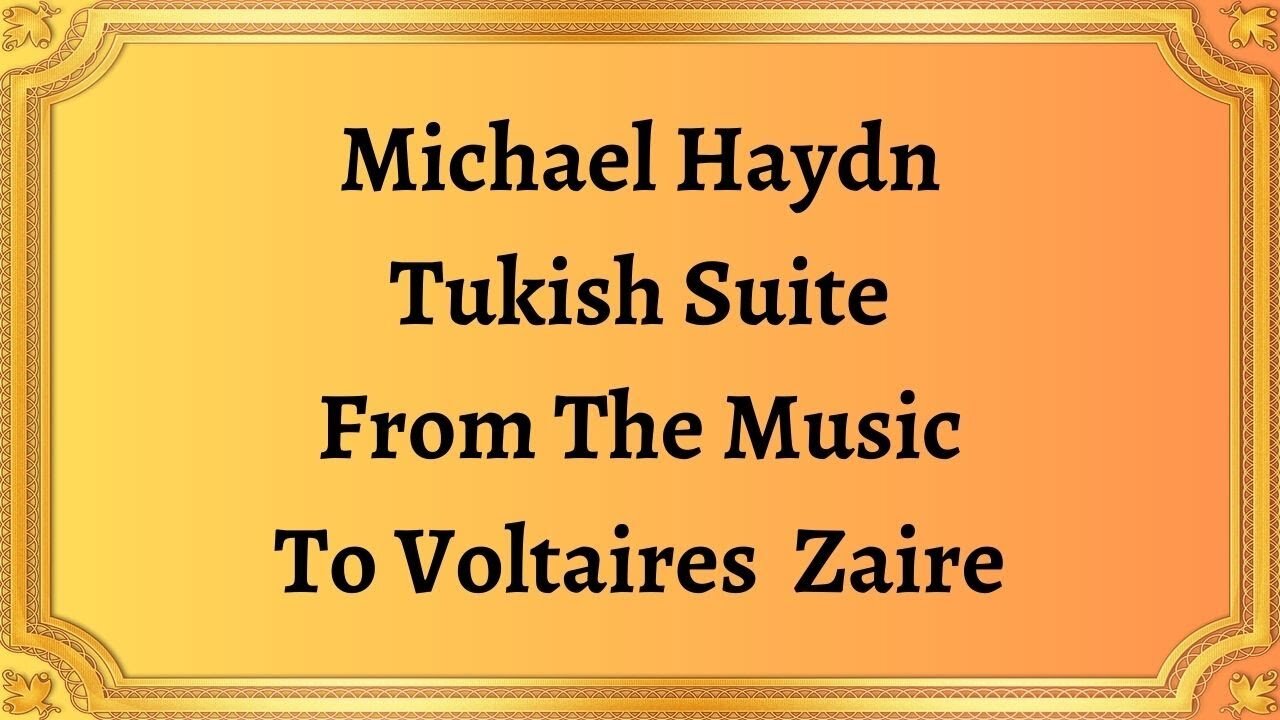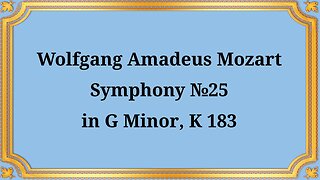Premium Only Content

Michael Haydn Tukish Suite From The Music To Voltaires Zaire
Publication date 1950
Wiener Symphoniker; Henry Swoboda
The "Turkish Suite from the Music to Voltaire's Zaire" was composed in 1769. The piece is a small section of the larger work, which is a play by Voltaire. Michael Haydn composed the music to accompany the play. Interestingly, Michael's older brother was the famous Austrian composer, Franz Joseph Haydn, who he worked alongside for many years.
The "Turkish Suite" contains four movements, each representing different musical themes that draw on Turkish and Middle Eastern music. Michael Haydn was influenced by Turkish music, which was a popular musical style during the eighteenth century in Europe. The first movement, called the March, is a celebratory tune that evokes a sense of grandeur and excitement. The second movement, called the Serenade, is a slow and melodious piece that adds variation to the suite and gives it a romantic feel. The third movement, called the Posthorn, is a musical tribute to the Posthorn, a traditional Austrian instrument. Finally, the fourth movement, called the Rondeau, returns the listener to the original celebratory theme of the March.
The piece also explores different aspects of Turkish culture, such as the use of cymbals, drums, and piccolos. These instruments, paired with the string section and the choir, bring depth and complexity to the overall composition. The subtle blend of these instruments and different tempos bring out a unique sound that makes the piece stand out among other classical works.
The "Turkish Suite" requires an experienced orchestra and skilled conductor to perform. Soloists are also needed to play the different parts, such as the piccolo solo during the fourth movement. The piece is notable for its technical demands, particularly for the percussionists who are required to execute the challenging rhythms accurately.
In conclusion, Michael Haydn's "Turkish Suite from the Music to Voltaire's Zaire" is a unique classical composition that showcases the composer's love for Turkish and Middle Eastern music. The piece, particularly the use of cymbals and drums, is evocative and adds depth to the overall experience. The demands of the piece make it a challenging piece to perform, but the final product is an engaging and exciting work of art that remains popular among classical music enthusiasts today.
You have the opportunity to support the channel: https://destream.net/live/RadSiarAl/donate
-
 16:53
16:53
Classical music_Music Inspiration
5 days agoWolfgang Amadeus Mozart Symphony No. 25 in G minor, K. 183
271 -
 LIVE
LIVE
GritsGG
7 hours agoWin Streaking All Day! Most Wins 3230+ 🧠
783 watching -
 2:57:17
2:57:17
Barry Cunningham
1 day agoMUST SEE: 10 REASONS WHY IT'S TIME FOR PRESIDENT TRUMP TO DROP THE HAMMER! ( AND MORE NEWS)
63.3K84 -
 LIVE
LIVE
Mally_Mouse
4 hours agoSpicy *Sunday*!! - Let's Play!
138 watching -
 49:57
49:57
Sarah Westall
4 hours agoScience behind Social Revolutions, the Media, Beatles, Aliens and more w/ Mark Brake
26.8K6 -
 LIVE
LIVE
FusedAegisTV
21 hours agoOFFICIAL Evo 2025 Day 3 Co-Stream - Las Vegas, NV ∥ Top 8 FINALS! SF6, Tekken 8 & MORE
375 watching -
 1:09:08
1:09:08
Jeff Ahern
6 hours ago $5.91 earnedThe Sunday show!
36.6K15 -
 LIVE
LIVE
megimu32
1 hour agoOFF THE SUBJECT: Rock Band Night! Let’s Shred & Hang!
54 watching -
 LIVE
LIVE
EricJohnPizzaArtist
5 days agoAwesome Sauce PIZZA ART LIVE Ep. #57: MYSTERY PIZZA NIGHT!
102 watching -
![LIVE Replay - Win or Lose, Gotta Keep Pushing Forward!!! [Marvel Rivals]](https://1a-1791.com/video/fww1/46/s8/1/O/p/b/8/Opb8y.0kob.1-small-Win-or-Lose-Gotta-Keep-Push.jpg) 1:26:12
1:26:12
JTtheSG
2 hours agoLIVE Replay - Win or Lose, Gotta Keep Pushing Forward!!! [Marvel Rivals]
739